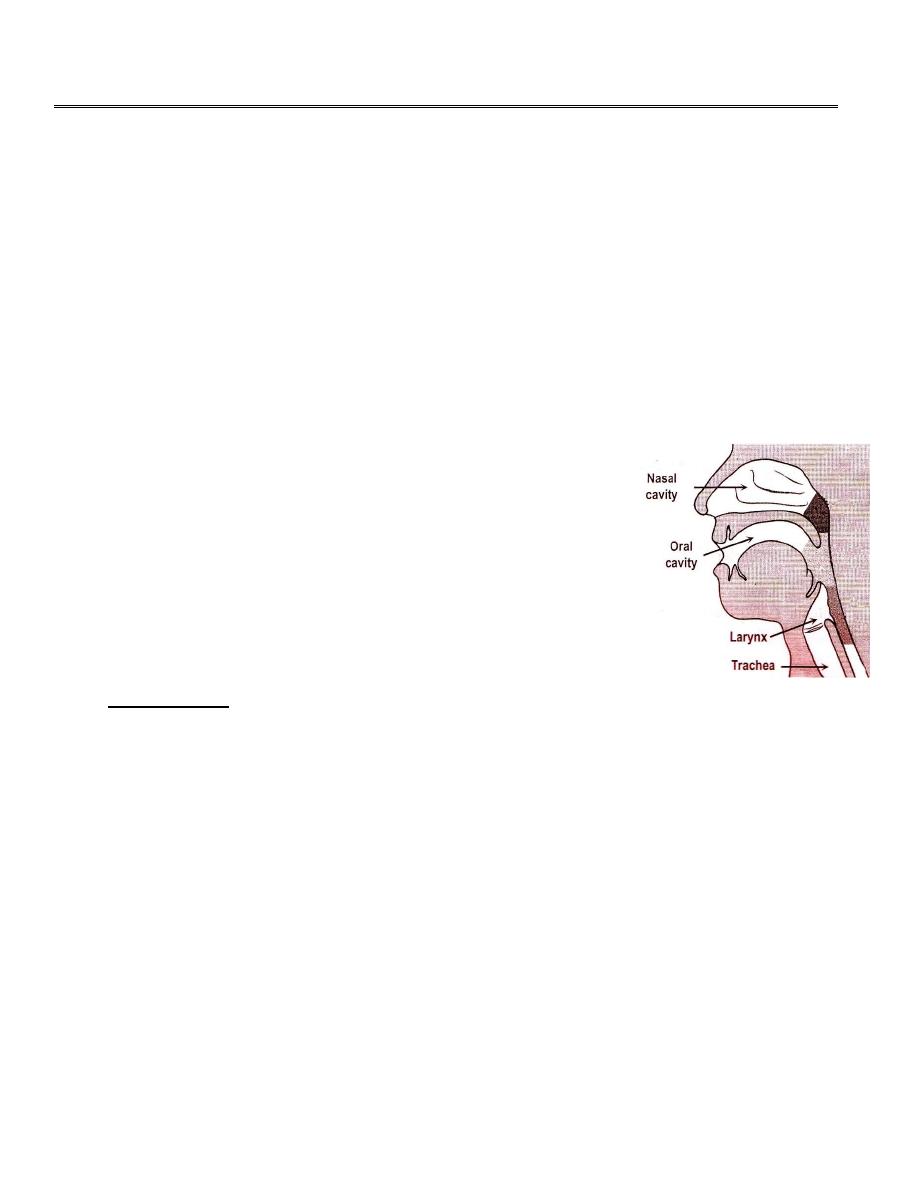
1
Fifth stage
ENT
Lec-6
د.سعد
7/10/2015
The pharynx
Anatomy
The pharynx is a conical fibromuscular tube forming the upper part of the air and food passages,
controlling and diverting air to the respiratory passages and food and fluid to the esophagus
using propulsive waves of muscle contraction. It is 12-14 cm long, extending from the base of
the skull to the lower border of the cricoid cartilage ( at the level of C6) where it becomes
continuous with the oesophagus. The width of pharynx is 3.5cm at its base and this narrows to
1.5 cm at pharyngo-oesophageal junction which is the narrowest part of digestive tract apart
from the appendix.
Divisions of the pharynx
The pharynx communicates anteriorly with the nasal cavity, mouth
and pharynx; and is thus divided anatomically into the nasopharynx
(postnasal space), the oropharynx and the laryngopharynx
(hypopharynx).
1. Nasopharynx:
This extends from base of the skull to the hard palate and communicates anteriorly
with the nasal cavity through the posterior nares (choanae). At the junction of the roof and
posterior wall, there is a small of lymphoid tissue called the nasopharyngeal tonsil (adenoid).
In the lateral wall there are openings of the Eustachian tubes, behind these are the
eminences called Eustachian cushions and posterior to these are the fossae of Rosenmuller.
These are deep depressions that extend laterally below the skull base, they are in close
proximity to the lower cranial nerves. These fossae are common sites for nasopharyngeal
CA so may present late with cranial nerves palsies if it extends laterally.
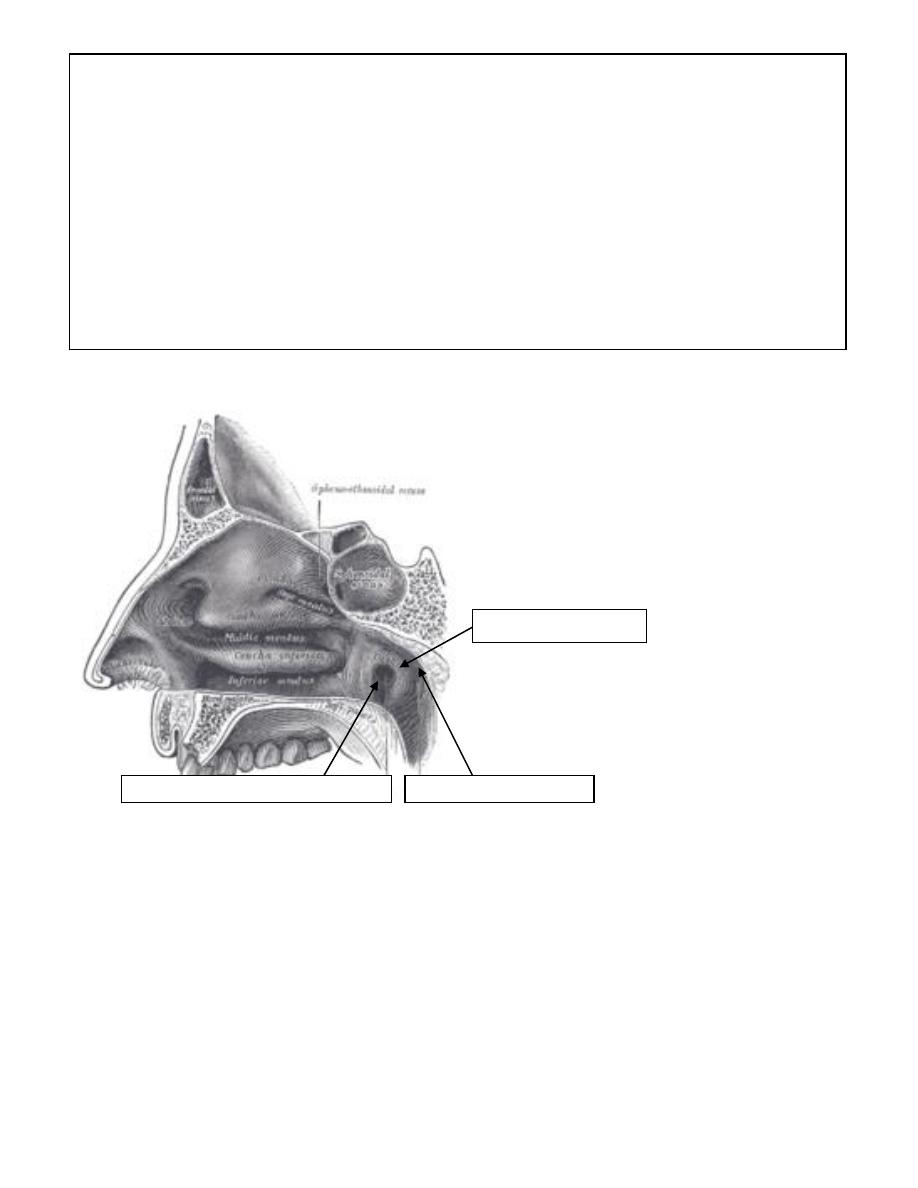
2
Nasopharynx (sagital section)
Summary
• Anteriorly; nasal cavity
• Posterosuperiorly; basisphenoid …adenoid
• Posteriorly; extend down to the junction of the hard and soft palate and is formed by
pharyngobasilar fascia in front of C1 (atlas)
• Inferiorly; the superior surface of the soft palate and opens into the oropharynx.
• Laterally;
openings of the Eustachian tubes
Eustacian cushions,
fossae of Rosenmuller.
Eustachian cushion
Fossa of Rosenmuller
Pharyngeal orifice of Eustachian
tube
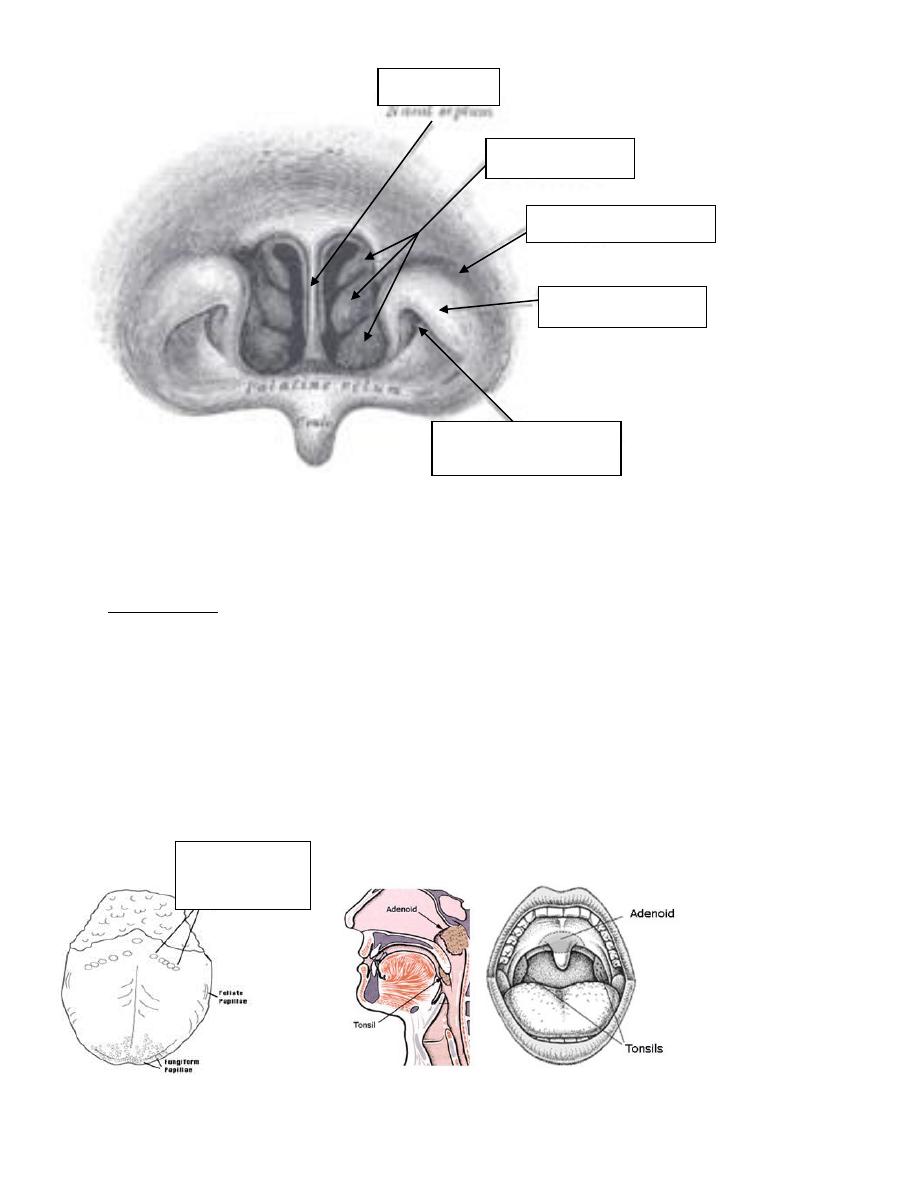
3
Nasopharynx ( Posterior veiw )
2. Oropharynx:
This extends from the level of hard palate to the level of hyoid bone
(in front of
2nd&3rd cervical vertebrae) and opens anteriorly into the oral cavity. The palatine tonsils
are situated in its lateral wall lying between the anterior and posterior pillars. The dividing
line between the oropharynx and mouth is: junction of hard palate and soft palate above,
anterior pillar laterally, and junction of anterior 2/3 and posterior 1/3 of the tongue
(circumvallate papillae).
The Tongue
The tonsils and adenoid
Nasal septum
Eustachian cushion
Fossa of Rosenmuller
Pharyngeal orifice of
Eustachian tube
Nasal turbinates
circumvallate
papillae
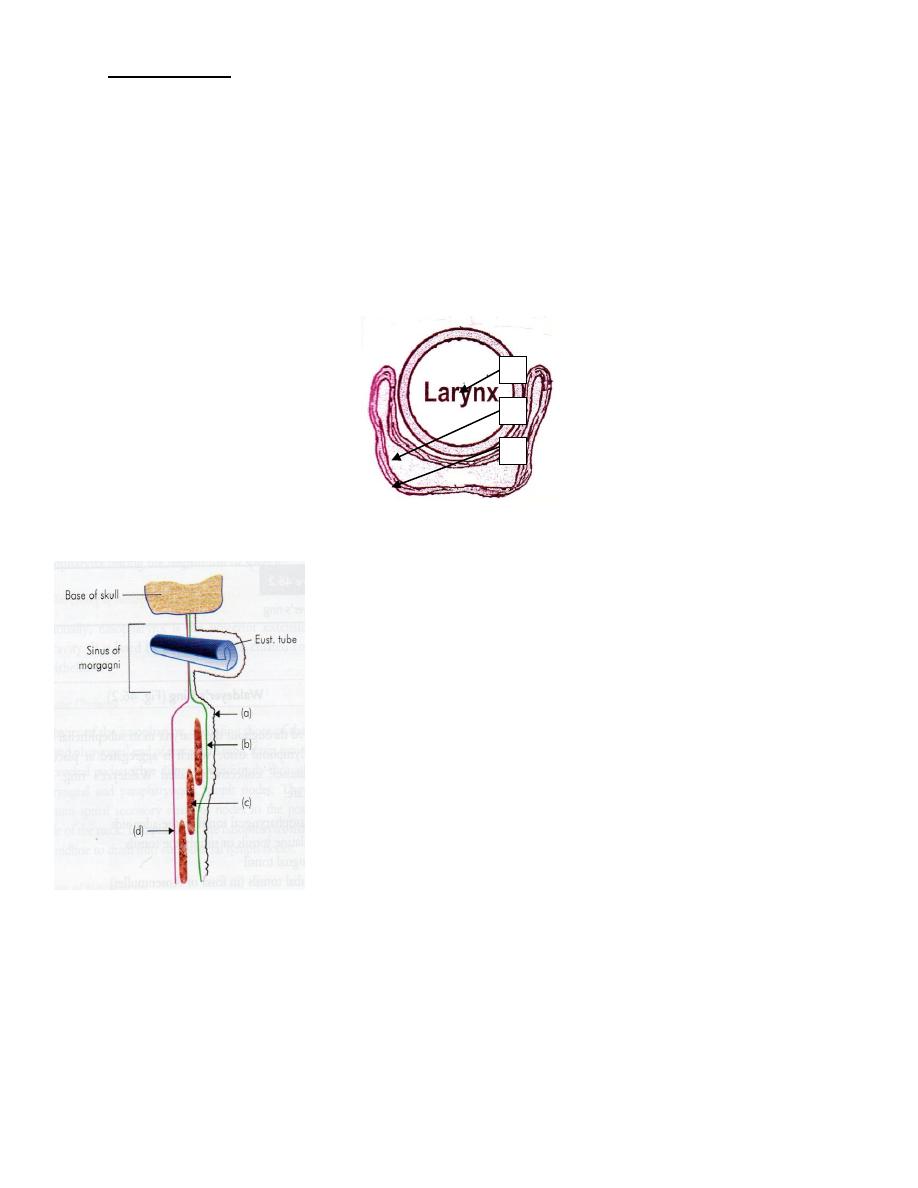
4
3. Hypopharynx:
It extends from the level of hyoid to the upper end of esophagus (in front of 3rd to 6th
cervical vertebra) and communicates anteriorly with the larynx and below with the
esophagus. It consist of three parts:
a) Pyriform fossa: two potential spaces on each side of the pharynx forming a lateral
food channel during swallowing.
b) Postcricoid area: lies behind the cricoid cartilage.
c) Posterior pharyngeal wall.
The structure of pharyngeal wall
The pharyngeal wall consists of 4
layers from inside to outside:
a. Mucous membrane.
b. Pharyngobasillar fascia (pharyngeal
aponeurosis)
c. Muscular coat
d. Buccopharyngeal fascia
C
B
A

5
Mucous membrane
The nasopharynx is lined by pseudostratified ciliated columnar epithelium with goblet cells
(respiratory epithelium), with some minor salivary glands. The oro- and hypopharynx are lined
by nonkeratinizing stratified squamous epithelium.
Pharyngobasillar fascia
This is a strong fibrous layer attached superiorly to the base of the skull. It is strengthened
posteriorly by strong fibrous band called “median pharyngeal raphe”. This raphe attaches
above to the base of the skull, and gives insertion to the constrictor muscles.
Muscle layer
1. Circular (outer layer): consists of three constrictor muscles overlapping one another
from below upward.
a) Superior constrictor.
b) Middle constrictor.
c) Inferior constrictor; has 2 parts:
a)
Thyropharyngeus (oblique) arises from thyroid cartilage
b)
Cricopharyngeus (transverse) arises from the cricoid cartilage and passes
backwards forming the upper esophageal sphincter.
Killian’s Dehiscence: This is a potential
gap between fibers of thyropharyngeus
and cricopharyngeus muscles. Normally
cricopharyngeus muscle relaxes when
food bolus is pushed by the pharynx
towards the esophagus. If this does not
happen, mucosa will bulge outward
forming a pharyngeal pouch.
REMEMBER; Air Passages = Respiratory Epithelium
Food Passages = Squamous Epithelium
pharyngeal pouch

6
2. Longitudinal ( internal ): These muscles elevate the larynx and shorten the pharynx
during swallowing;
a)
Stylopharyngeus
b)
Salpingopharyngeus
c)
Palatopharyngeus
Buccopharyngeal fascia
This fascia is loosely attached posteriorly to the prevertebral fascia and laterally it is connected
to the styloid process and the carotid sheath.
Nerve supply of the pharynx
The pharyngeal plexus is formed in the buccopharyngeal fascia and consists of:
1. Pharyngeal branch of IX cranial n.
2. Pharyngeal branch of X cranial n.
3. Sympathetic fibers from superior cervical ganglion.
All muscles of the pharynx are supplied by pharyngeal branch of the vagus except
stylopharyngeus which is supplied by pharyngeal branch of IX.
Waldeyer’s ring:
It is a collection of lymphoid tissue in the nasopharynx and oropharynx at the entrance to the
airodigestive tract. It is composed of:
1. Nasopharyngeal tonsil (adenoid): lies in the midline between the roof and posterior wall of
the nasopharynx. Its free surface shows about 5 vertical fissures.
2. Tubal tonsils: lie behind the opening of the Eustachian tubes.
3. Palatine tonsils.
4. Lingual tonsils: embedded in the posterior 1/3 of the tongue.
5. Lateral pharyngeal bands: behind the posterior tonsillar pillars, become prominent in
patients with post nasal discharge.
6. Lymphoid nodules scattered on the posterior pharyngeal wall.
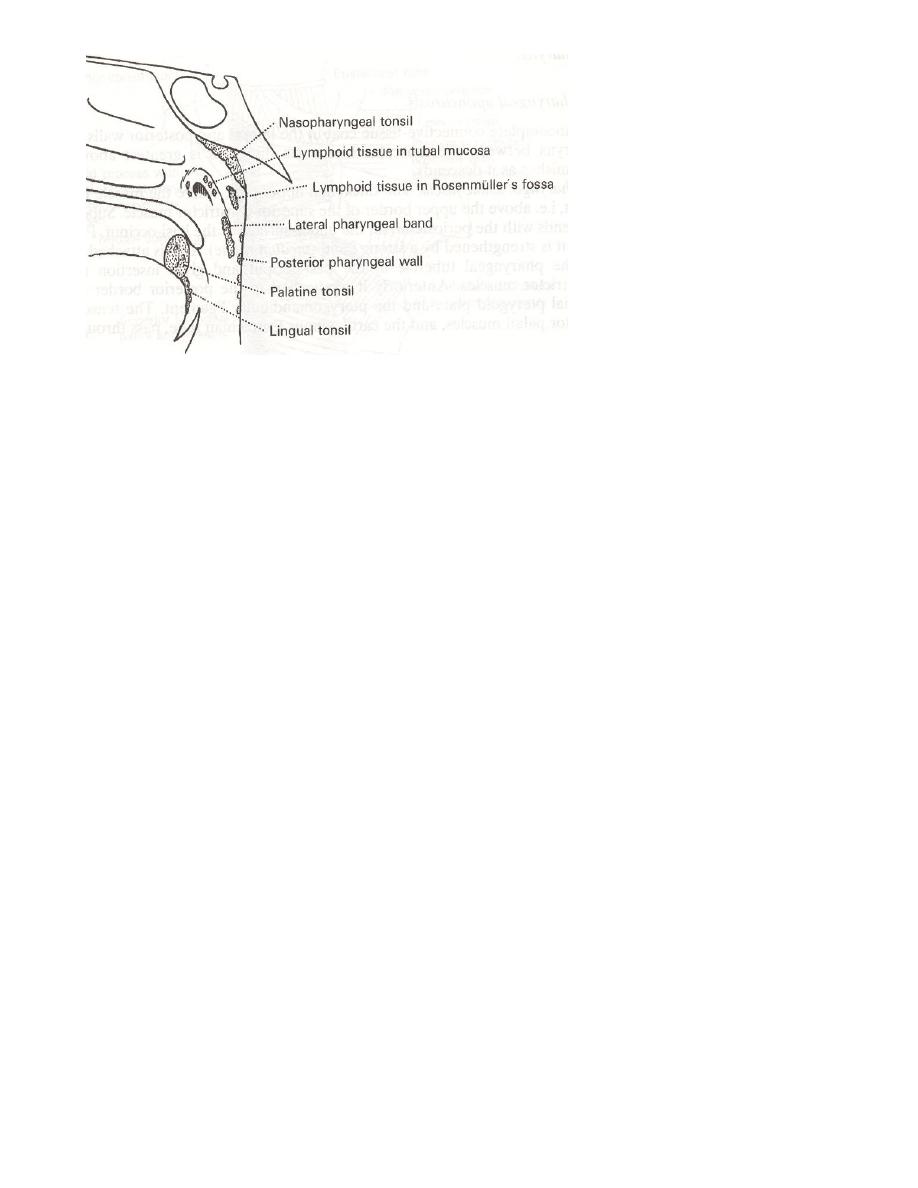
7
Hypertrophy of the lymphoid tissue of Waldeyer’s ring occurs in the earlier years of childhood,
probably in response to URTI. Maximum hypertrophy occurs between 4-10 years, thereafter
some regression in size is to be expected, and in old age it atrophies.
Waldeyer’s ring is characterized by:
1. Sub-epithelial lymphoid tissue.
2. Lack of definite capsule.
3. They have efferent lymph vessels, but NO afferent vessels.
4. They function as one unit; when a member of it is removed the other parts undergo
compensatory hypertrophy.
5. The exact function is unknown but it is thought that it has a protective function by:
a) Formation of lymphocytes.
b) Secretion of antibodies mainly IgA.
c) Localization of infection entering the body by initial contact with the incoming
organism.
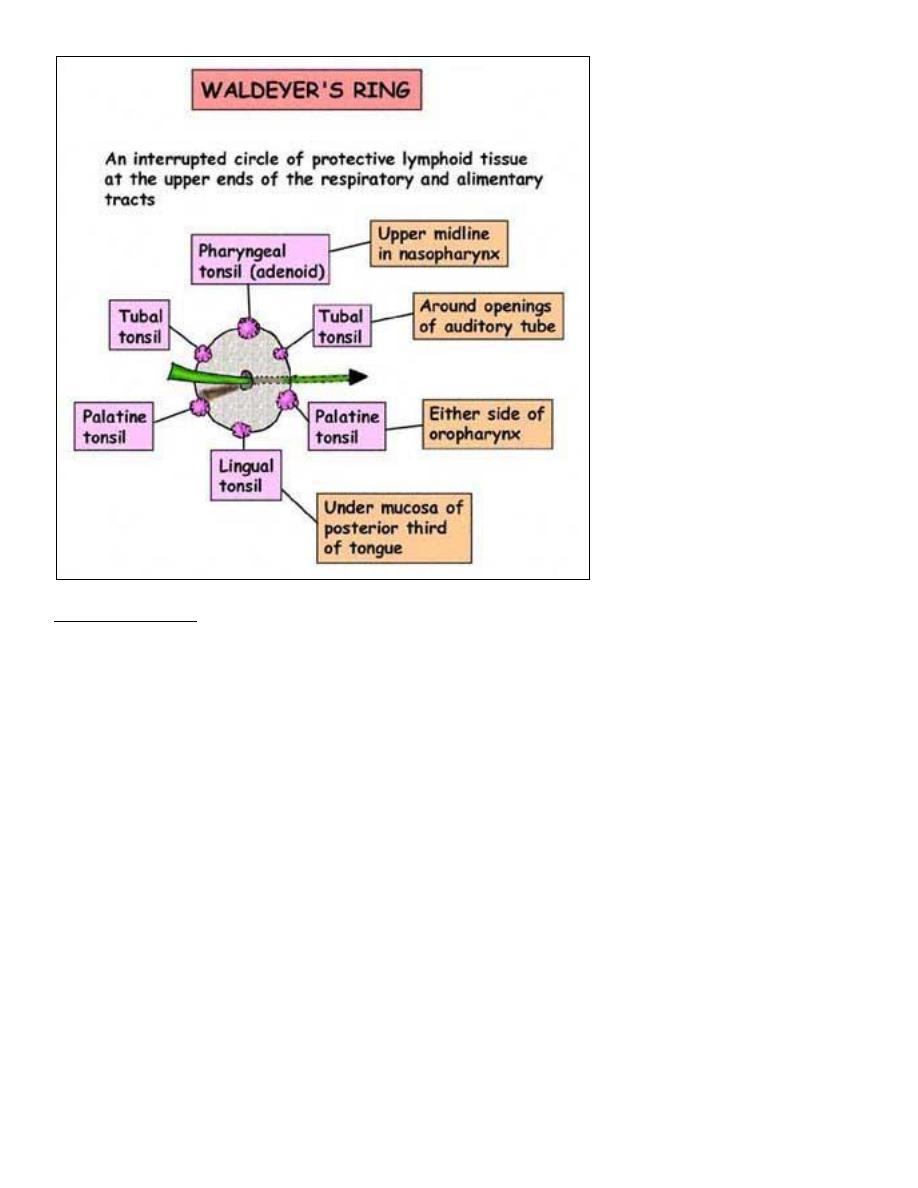
8
Palatine tonsils
Two masses of lymphoid tissue situated on each side of oropharynx. Each tonsil is situated
between palatoglossus muscle anteriorly, and palatopharyngeus posteriorly. Its medial surface
is pitted by a number of crypts. Laterally the tonsil is enclosed by a dense fibrous capsule
separating the tonsil from the superior constrictor (tonsillar bed). This capsule provides a
convenient plane for dissection of the tonsil during tonsillectomy.
Blood supply of the tonsil
From the External Carotid Artery & its branches
1- Tonsillar artery (from facial artery)
2- Ascending palatine artery (from facial artery)
3- Ascending pharyngeal artery (from external carotid)
4- Descending palatine artery ( from maxillary artery.
5- Dorsalis lingulae artery (from lingual artery)
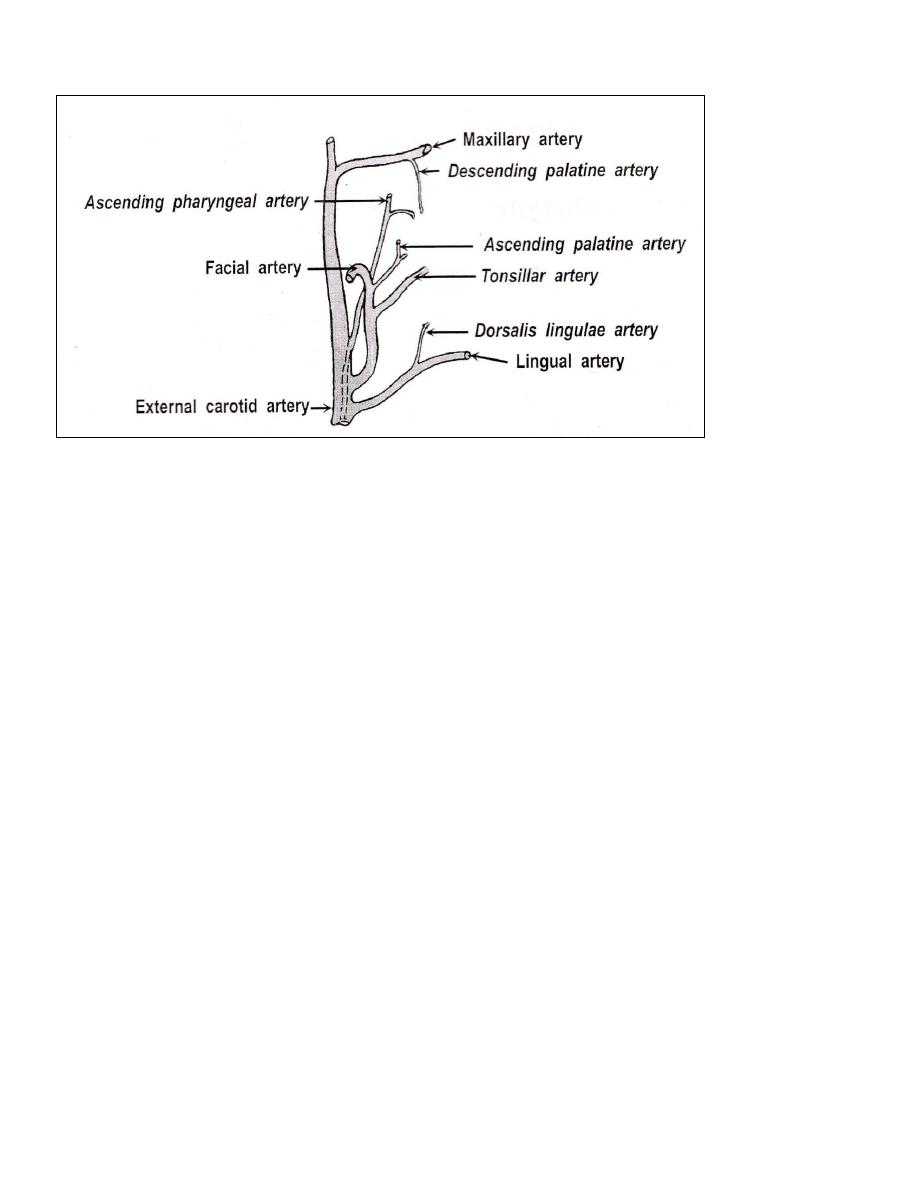
9
Blood suply of the tonsil
Venous drainage
To the paratonsillar vein which drains to the pharyngeal plexus. The plexus drain to the
internal jugular veins.
Retropharyngeal space ( Space of Gillette)
It is a potential space that lies between the pre vertebral fascia posteriorly and the
buccopharyngeal fascia anteriorly. It extend from the base of the skull to the superior
mediastenum.
It contains retropharyngeal lymph nodes of Rouviere: few lymph nodes that disappear
spontaneously during the 3
rd
or 4
th
year of life.
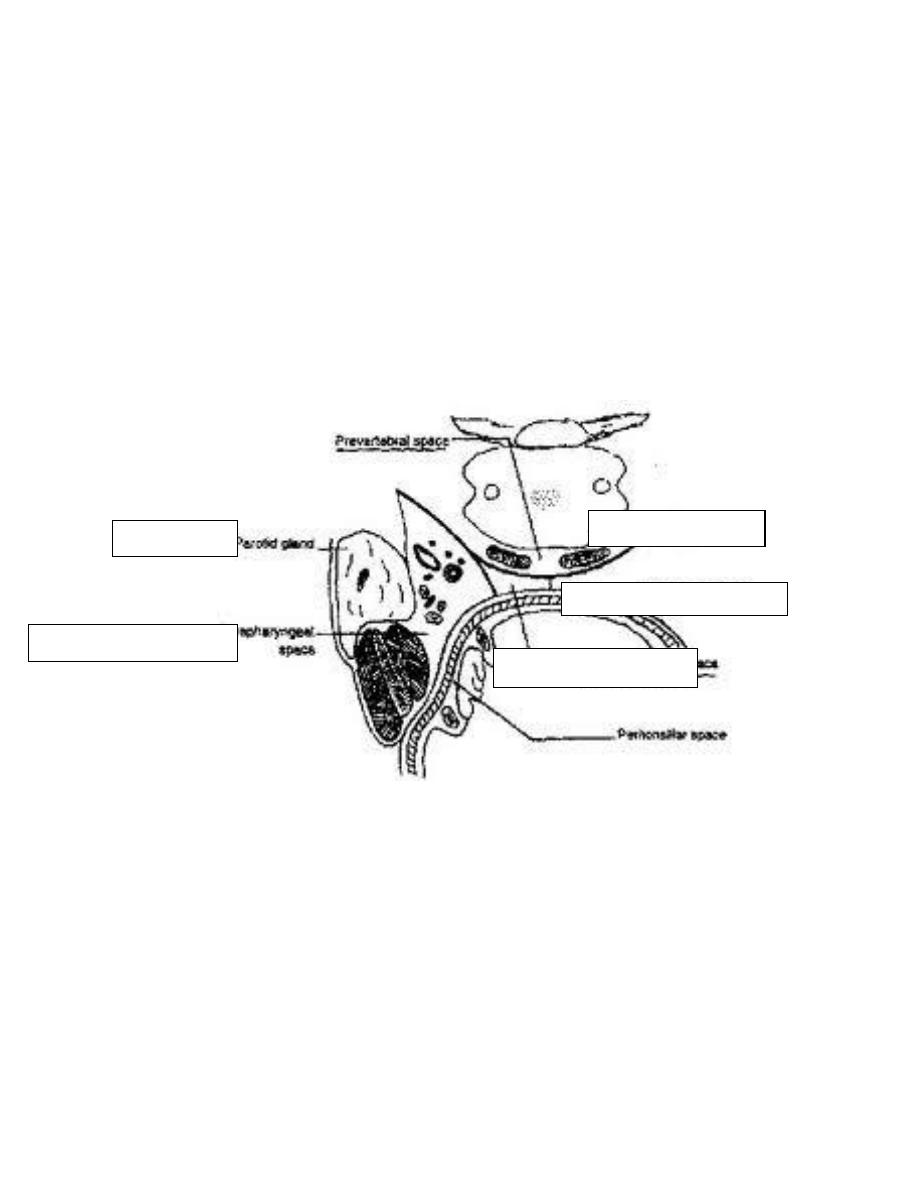
11
Parapharyngeal Space
It is a potential space that lies lateral to the pharynx and connects posteriorly with the
retropharyngeal space. It extends from the base of the skull to the hyoid bone (i.e. it is lateral
to the nasopharynx and oropharynx ).
It is bounded medially by the superior constrictor muscle and laterally by the medial ptrygoid
muscle, mandible and deep lobe of parotid gland. Its posterior wall is the prevertebral muscle
and fascia.
It contains:
1) Deep cervical lymph nodes.
2) Last 4 cranial nerve and cervical sympathetic trunk.
3) Great vessels of the neck; common carotid artery and internal jugular vein.
Functions of the pharynx
1) Food and air inlet.
2) Play an important role in speech through vocal resonance and articulation.
3) The immunologic function of Waldeyer's ring.
4) Deglutition; which is divided into three stage;
Oral stage ( voluntary )
Pharyngeal stage ( involuntary )
Eosophageal stage ( involuntary )
Parotid gland
Parapharyngeal space
Retropharyngeal space
Buccopharyngeal fascia
Prevertebral fascia
